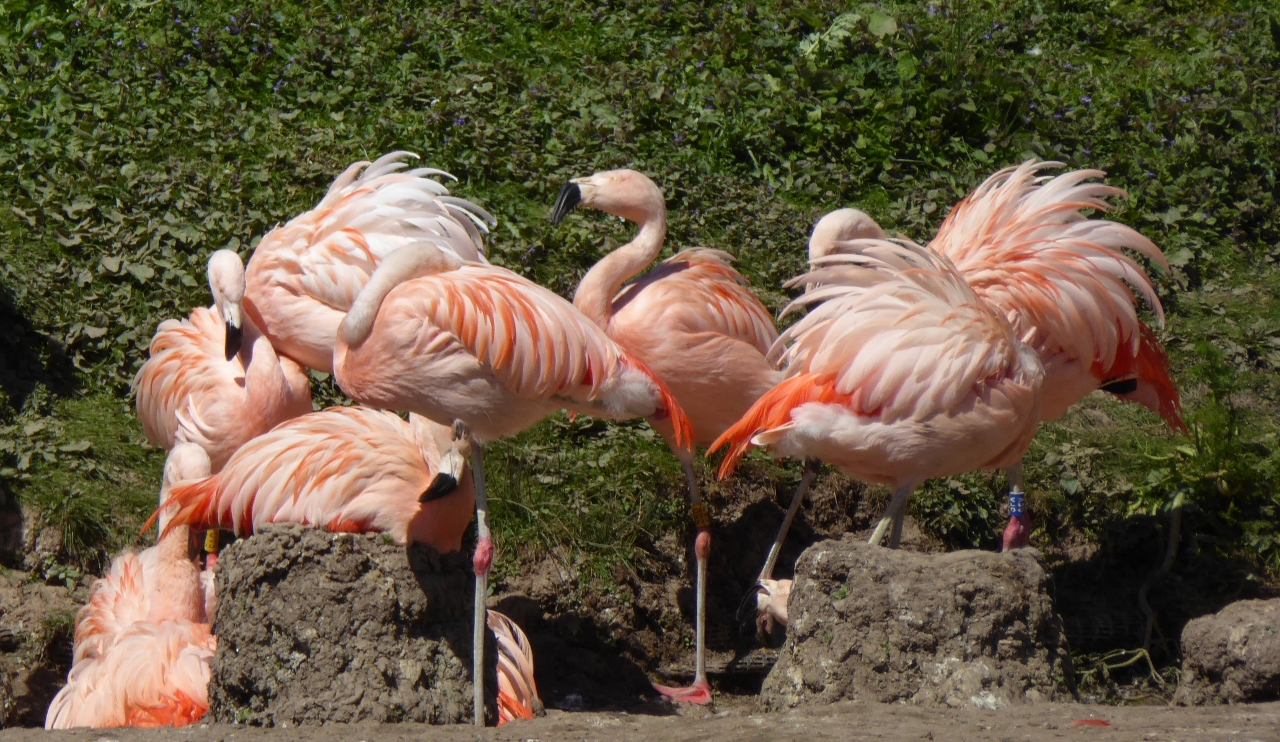Behaviour to look out for in Spring
I mentioned in my last post about new student projects that are springing up this year at WWT Slimbridge. So in this entry I thought I would combine an explanation of one on-going project and some highlights of bird behaviour in May. Nesting season is in the swing of things in the greater flamingo flock. And as birds are building at the front of their island, good views are guaranteed. Some of the other flamingos have been less energetic in the sunshine. My MSc student Rachael was out enjoying (I hope!) her data collection in the sunshine but was frustrated in her attempts to ID birds as they were all feeling a little too relaxed.
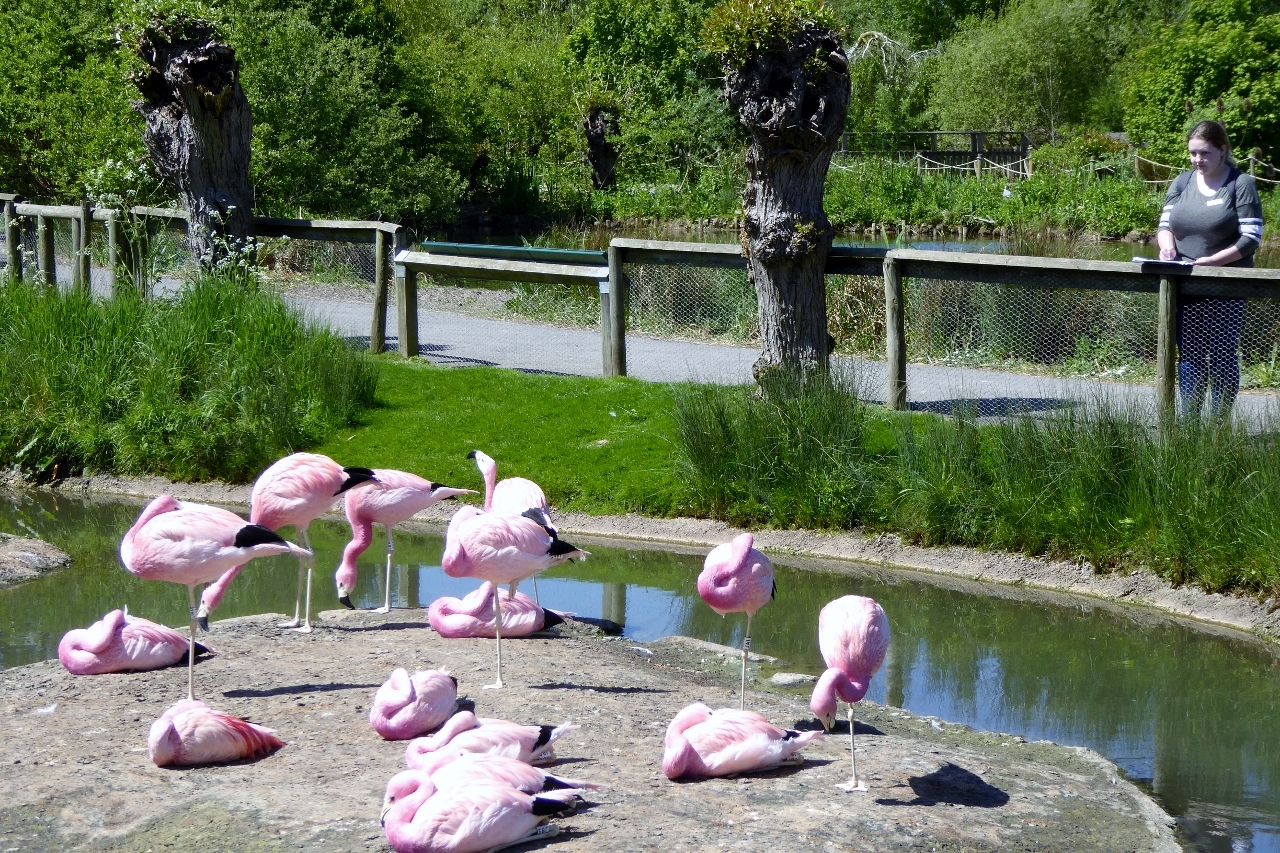 Rachael enjoys the sunshine. And participating in some flamingo science too. The flamingos seem less keen...
Rachael enjoys the sunshine. And participating in some flamingo science too. The flamingos seem less keen...
Don't be fooled by the apparent apathy- blame this on two factors. The sunshine and the time of day (but more on that in a future post). We've had a lot of interest in flamingo behaviour on social media over the past few weeks. The Andean flamingos have been putting on some of their best dance moves. In case you haven't seen it, the video of their in-your-face dance routine is here:
https://www.facebook.com/wwtslimbridge/videos/1755097367885249/
There's also been plenty of activity in the other flocks too. With some brilliant marching from the lesser flamingos. I was lucky enough to catch a glimpse of them making a great deal of noise and lots of milling around the other morning when I had to go into their house to change camera batteries (again for yet more flamingo science projects). Check out their voices here!
PS: If you see a "limpy" bird on film, this is an old flamingo. When she goes to sleep on one leg, it take her a while to remember how to walk on two legs and how to place her foot that's been off the ground. But it's all fine after a few steps.
And this is a nice link into Rachael's project. One-legged-standing plus the bird's colourful feathers. It's two things we associate with flamingos. But they are traits shared by many birds.
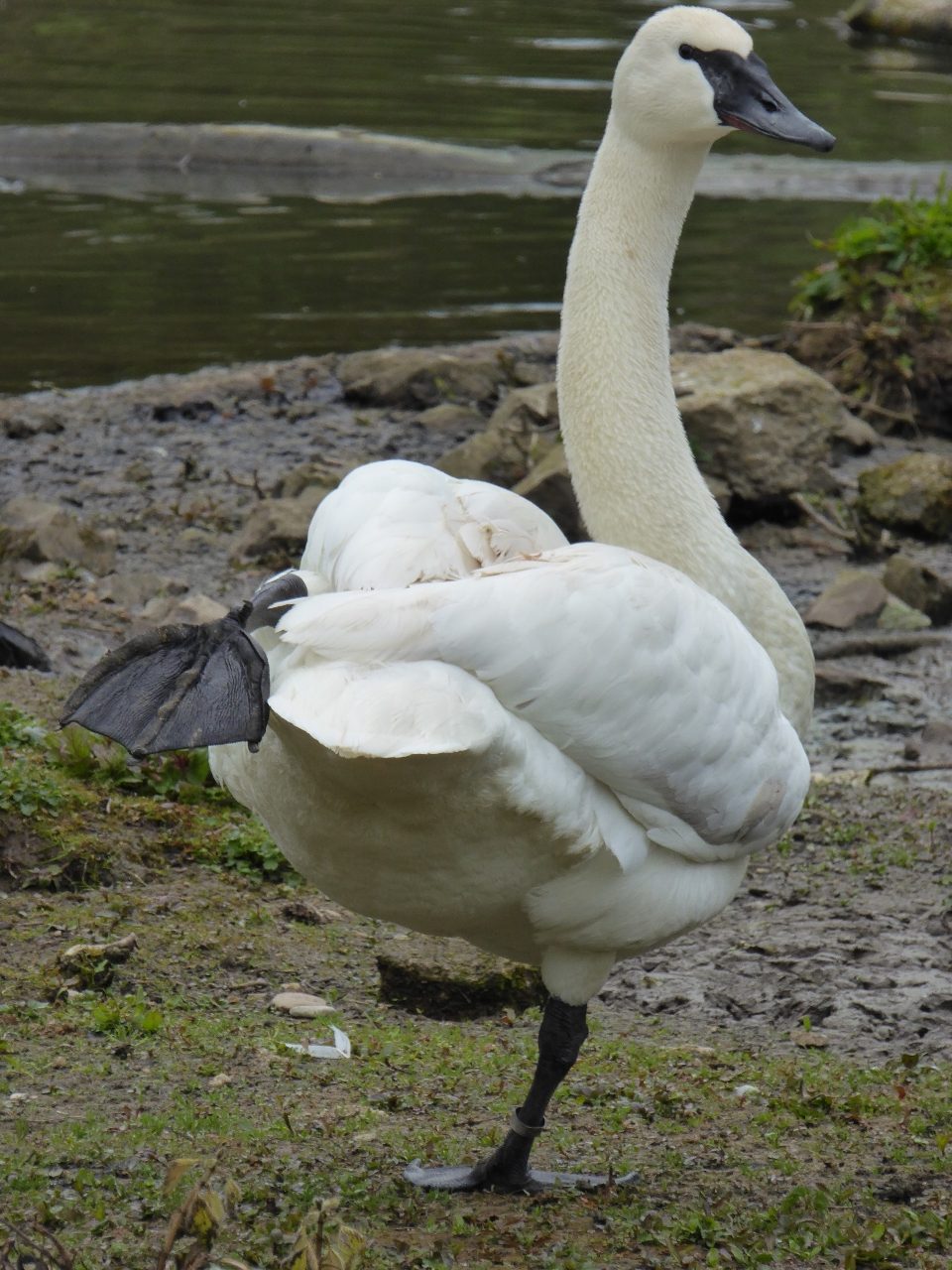 A large bird, with an obvious plumage colour, standing on one leg. Not just the preserve of a flamingo.
A large bird, with an obvious plumage colour, standing on one leg. Not just the preserve of a flamingo.
Standing on one leg is comfortable, saves energy when resting for long periods, and reduces the amount of heat lost to the bird's surroundings. Although we don't fully know all of the reasons why flamingos and other birds stand on one leg, and there is a lot of anecdote around to try explain this. Rachael is collecting data on the WWT Slimbridge Andean, Caribbean, Chilean, greater and lesser flamingos to see if more time is spent on two legs rather than one leg, and what behaviours are more commonly performed on one leg. Obviously flamingos can't walk or swim or do their courtship display when only on one leg but do they have specific positions that they like to be in for standing, resting and preening? Research that came out last year (http://theconversation.com/scientists-balanced-a-dead-flamingo-on-one-leg-to-unlock-the-birds-standing-secret-78231) showed that flamingos have a unique locking mechanism in their leg that helps them to stay in one position with minimal effort from their muscles. They can keep their balance for a long time without needing to wobble to stay in one place.
So where do we see flamingos standing on one leg? Is it more often in the water? Or on land? What about the weather? Do flamingos sit down more when it is sunny (as we seem to see in the photo above)? Comparing between the different species of flamingo at Slimbridge is a useful way of seeing what patterns of behaviour are common across these birds. Rachael will then compare her data, to that published on other species to look for any similarities or differences. And there are many factors that could cause this- habitat, feeding style, social group. Birds on one leg asleep may be less responsive to danger so do they only do this when their friends are around keeping an eye out too?
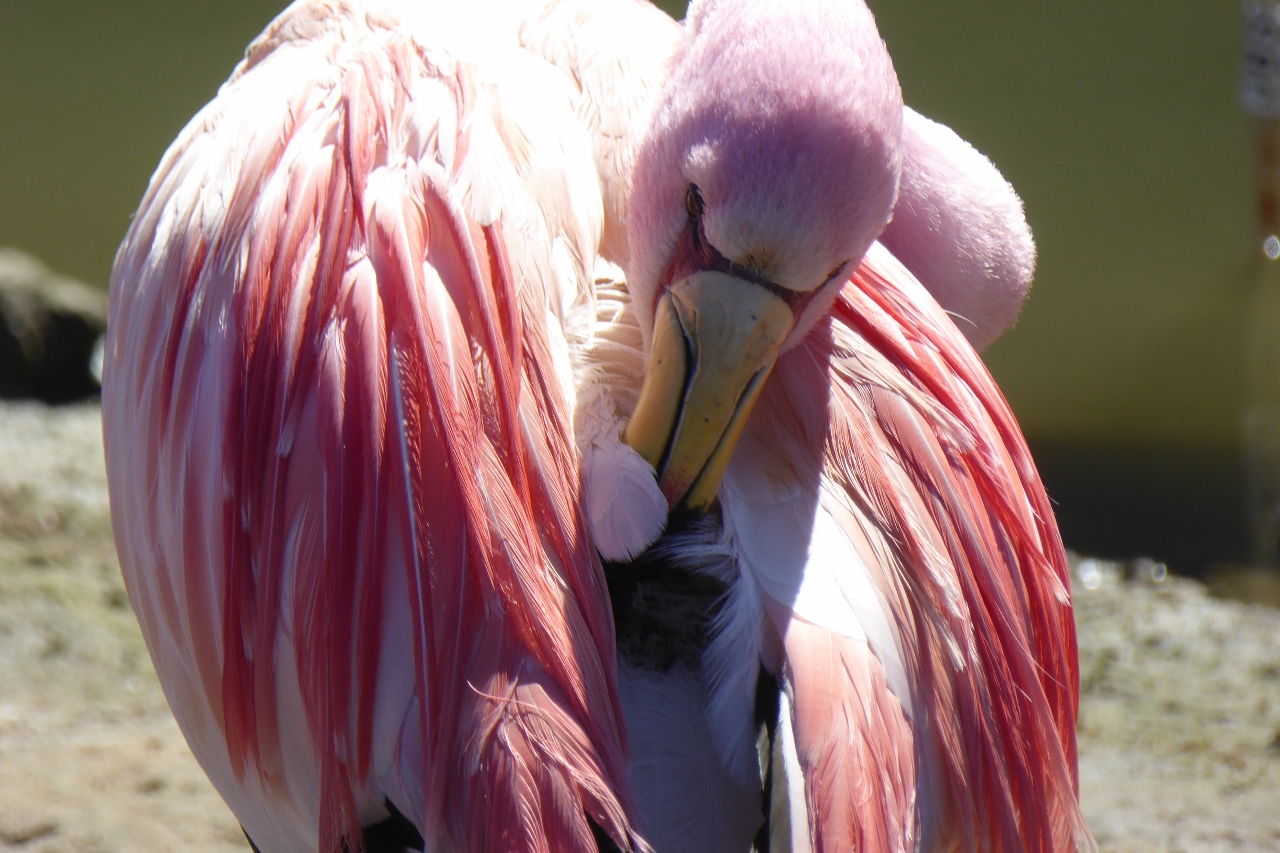 Spot the preen gland. It's the dark patch you can see in the photo. Here the flamingo can collect oil that helps it remain waterproofed and clean.
Spot the preen gland. It's the dark patch you can see in the photo. Here the flamingo can collect oil that helps it remain waterproofed and clean.
As preening is a behaviour that we often see when a flamingo is on one leg, Rachael is investigating this too. The harsh environment that wild flamingos love within (caustic soda lake that can cake feathers with salt and other nasty chemicals) means birds have probably evolved very careful, methodical cleaning routines. Wild lesser flamingos are known to form queues at hot springs that are found at the edges of these caustic lakes to drink and bathe in the relatively fresh water. As flamingos are very efficient at collecting food, and have little competition for the food that they eat, they may be able to spend more time in keeping feathers in tip-top condition compared to other species of bird.
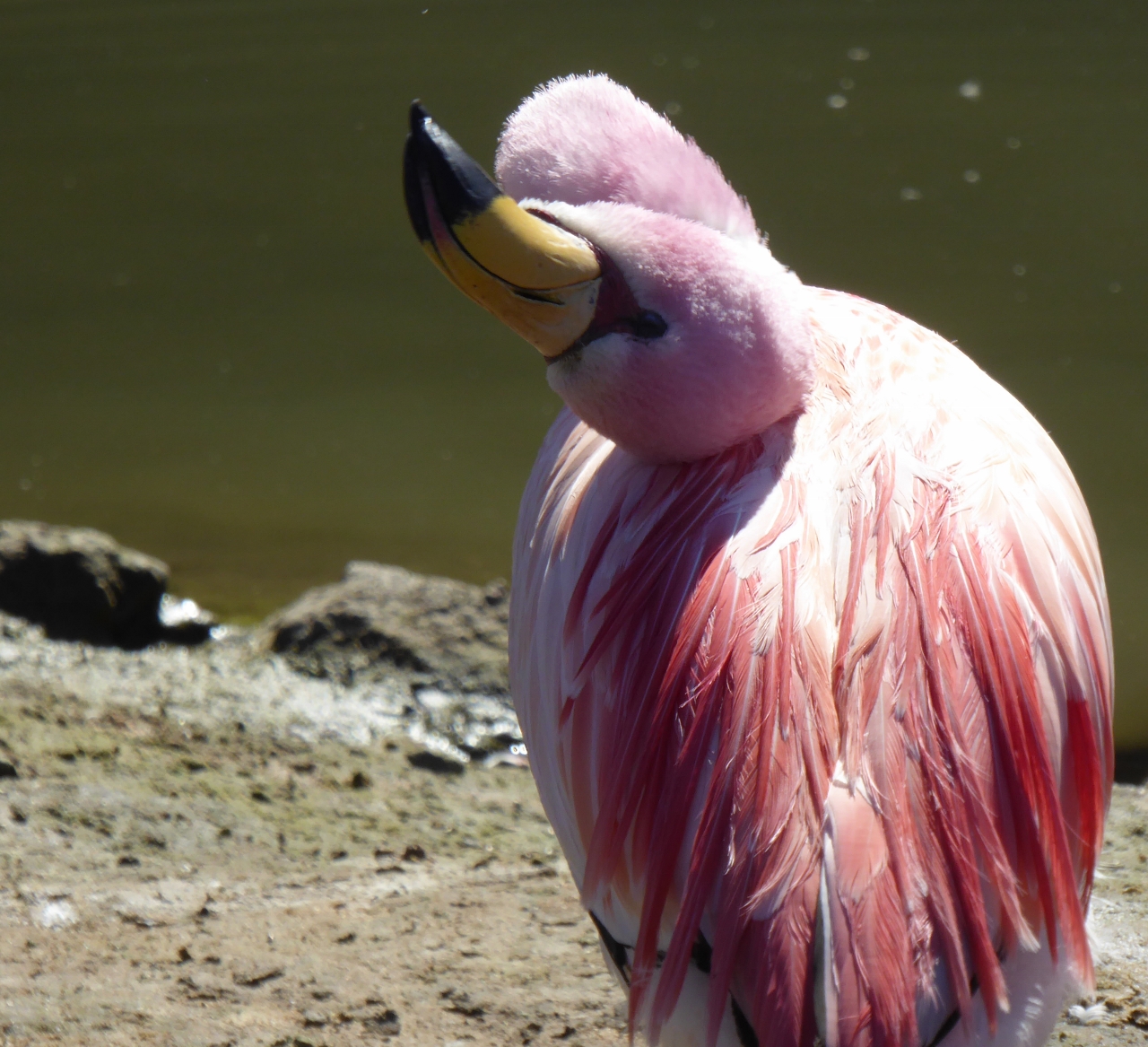 No, Mr James hasn't broken his neck. The stretched body shape of a flamingo means it has to work preen oil into its feathers using some odd twists and turns.
No, Mr James hasn't broken his neck. The stretched body shape of a flamingo means it has to work preen oil into its feathers using some odd twists and turns.
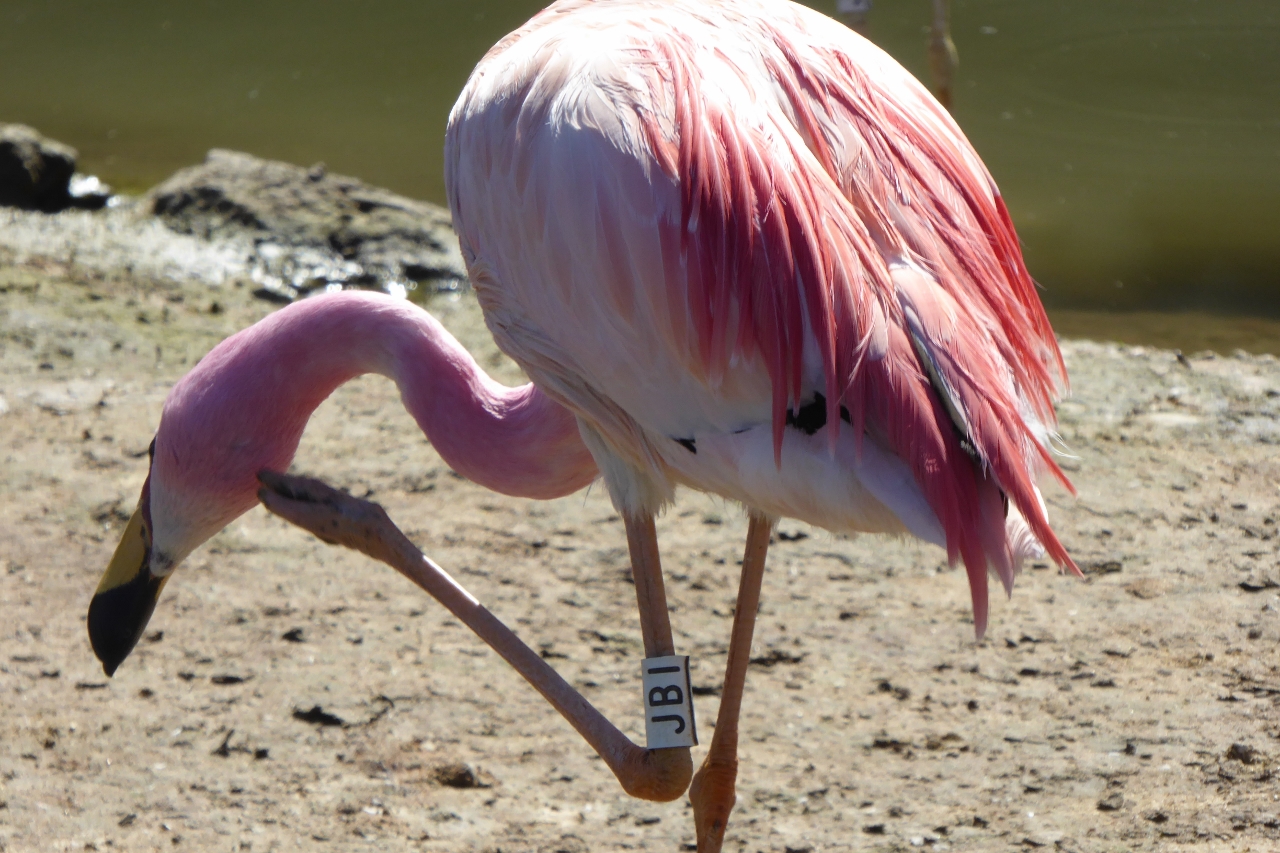 And for those hard-to-reach areas, just use your foot. Again, a reason for being so adept on one leg? You can then keep your chin extra clean with the free limb.
And for those hard-to-reach areas, just use your foot. Again, a reason for being so adept on one leg? You can then keep your chin extra clean with the free limb.
So are the behaviours of one-legged standing and intense preening activities evolutionary mechanisms to live in a hostile environment? Certainly without so much time spent preening, a flamingo's plumage would lose its effectiveness during courtship. And that would influence how successful a bird is at breeding. So it pays for them to spend a lot of time making their feathers look lovely.
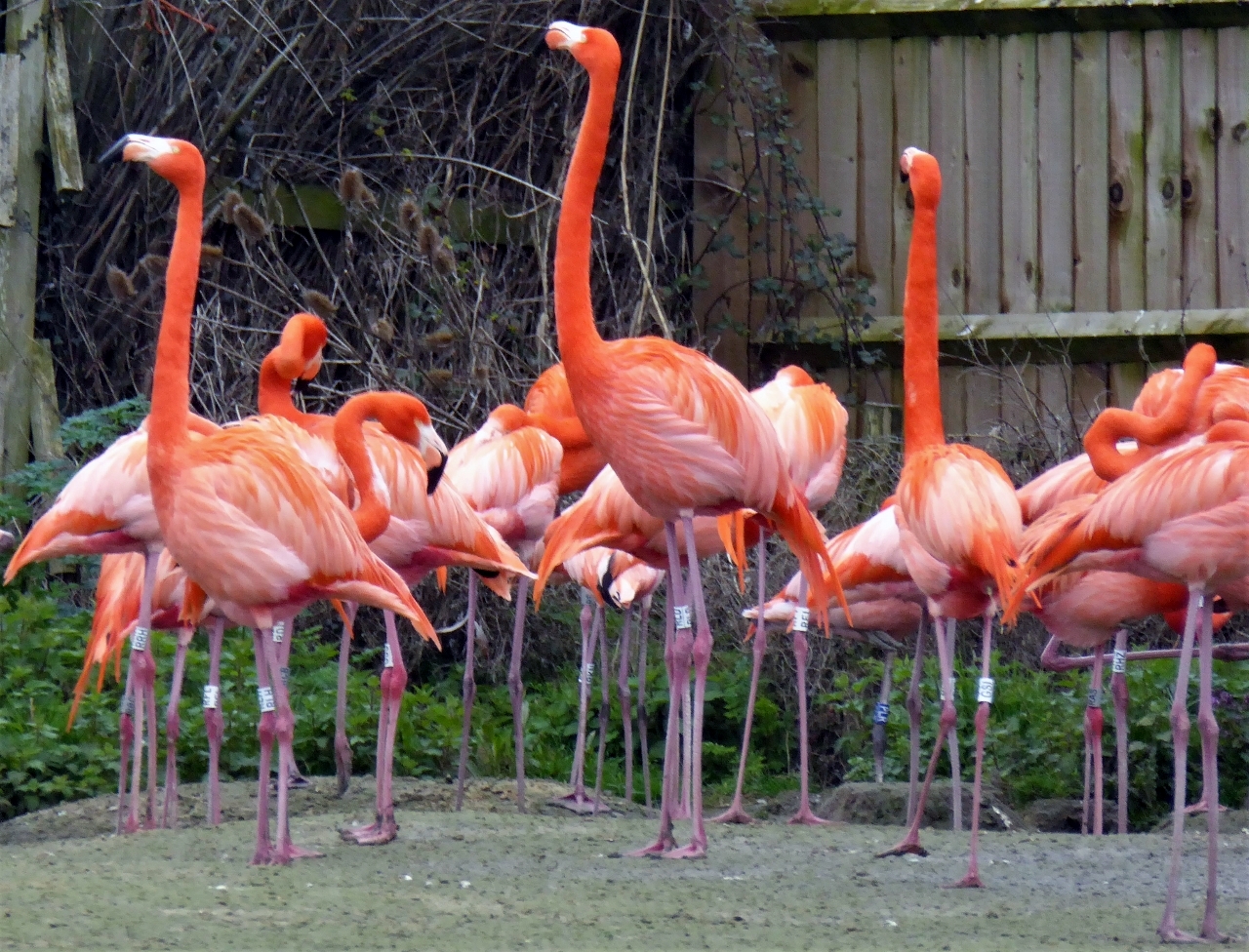 A very tall male Caribbean flamingo with very bright plumage tries to get the flock to start head-flagging. Two shorter females seem keen to join in. Why bother to produce such intensely colourful feathers if you are not going to look after them properly?
A very tall male Caribbean flamingo with very bright plumage tries to get the flock to start head-flagging. Two shorter females seem keen to join in. Why bother to produce such intensely colourful feathers if you are not going to look after them properly?
The energy saved by standing on one leg and keeping feathers spotless can be used for making more flamingos. And as I mentioned at the start, now is the time of year to see this happening. There are some substantial nests already constructed by the greater flamingos (see below). Healthy flamingos will begin nest building as soon as they have performed their courtship display and paired up. So it's little wonder that within only a few weeks of being let back out into their pen that the first mud towers have grown up on the greater flamingo nesting island.
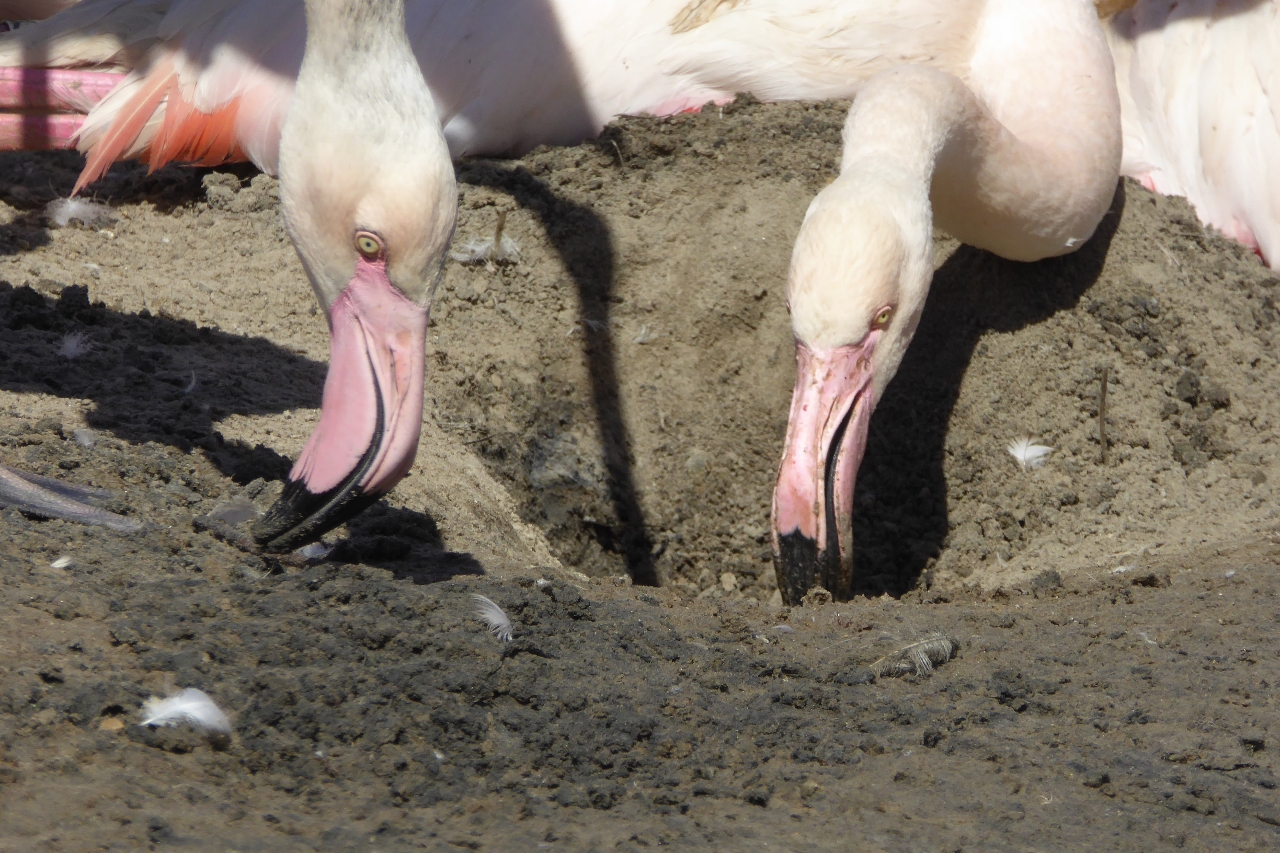 It's that time of year again. Nest mounds appear in Flamingo Lagoon.
It's that time of year again. Nest mounds appear in Flamingo Lagoon.
And in the Chilean flock the birds were squabbling over the nests mounds from last year. Some looked like they had been enlarged and patched up with some fresh mud. The Chilean flamingos have emerged from their stay inside (avian 'flu precautions) in the best condition- similar to what happened in 2017. And this may be the reason for their sudden urge to build nests. Fingers crossed that the sunshine continues and the birds remain inspired to build nests.
